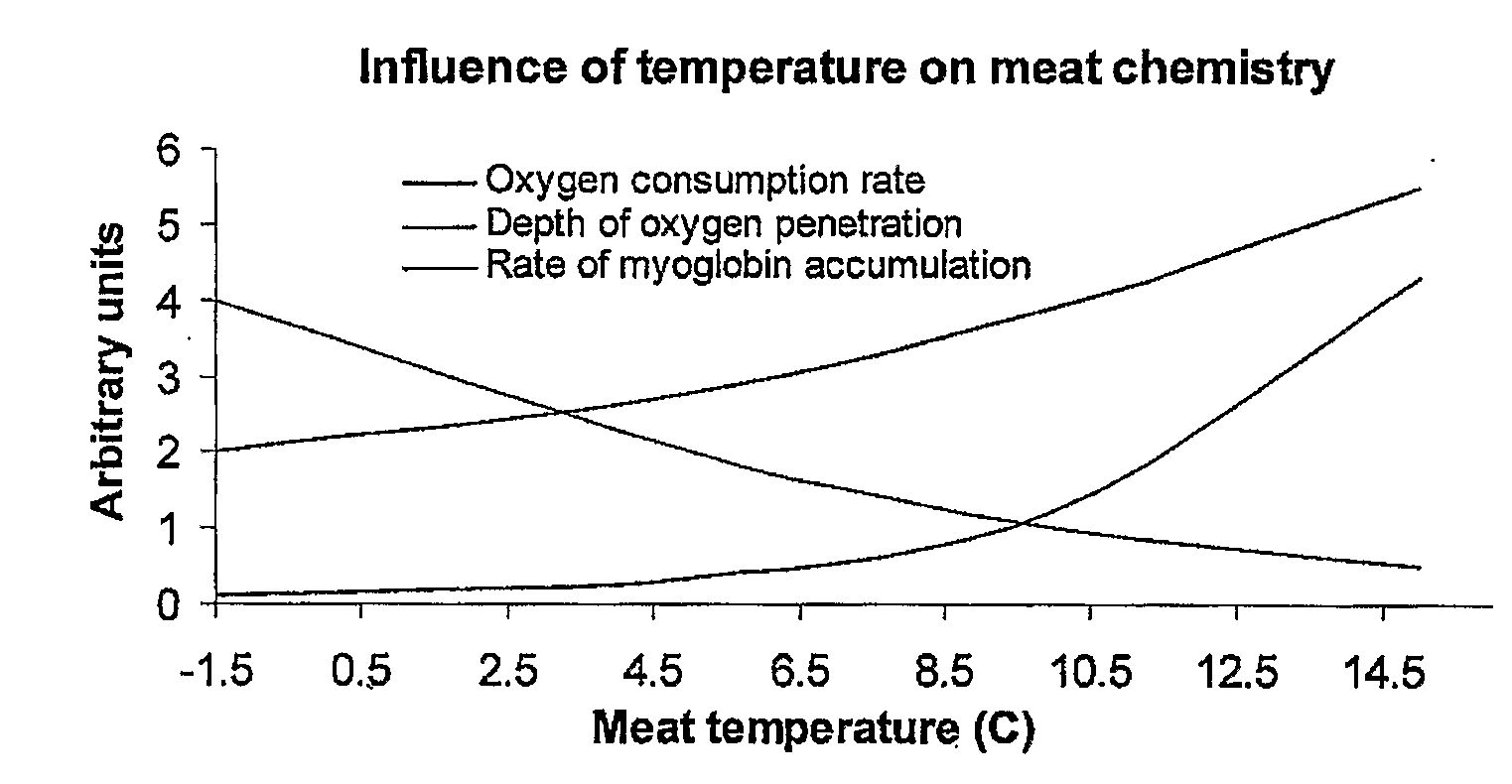Method of Preparing Cuts of Meat
a technology of meat and cut, applied in the field of preparing a cut of meat, can solve the problems of increasing the cost of the overall sales chain, reducing the shelf life of meat, so as to suppress the conversion, suppress the oxygen consumption reaction, and suppress the myoglobin conversion
- Summary
- Abstract
- Description
- Claims
- Application Information
AI Technical Summary
Benefits of technology
Problems solved by technology
Method used
Image
Examples
example 1
[0112] Retail display assessment tests were conducted comparing consumer acceptability of beef loin steaks prepared in a HiOx system with steaks conditioned by the conditioning step described herein.
[0113] The conditioned steaks were preconditioned as described herein by retaining in a CO2 environment under positive pressure while cooling the meat to as close to freezing as possible without freezing the meat.
[0114] The preconditioning of the beef meat primals was performed using the technology discussed in U.S. Pat. No. 6,194,012 and U.S. Pat. No. 5,670,195.
[0115] The conditioning step was carried out for 12 hours following cutting of the meat into steaks and overwrapped on retail trays. The results of two trials are provided below (Tables 1 and 2).
[0116] The HiOx system consisted of 80% oxygen, 20% carbon dioxide.
TABLE 1Consumer panel assessment of retaildisplay colour of loin steaks.1,2Day of Display1256789Conditioned6.676.726.316.055.935.705.45HiOx6.556.596.376.015.885.985....
PUM
 Login to View More
Login to View More Abstract
Description
Claims
Application Information
 Login to View More
Login to View More - R&D
- Intellectual Property
- Life Sciences
- Materials
- Tech Scout
- Unparalleled Data Quality
- Higher Quality Content
- 60% Fewer Hallucinations
Browse by: Latest US Patents, China's latest patents, Technical Efficacy Thesaurus, Application Domain, Technology Topic, Popular Technical Reports.
© 2025 PatSnap. All rights reserved.Legal|Privacy policy|Modern Slavery Act Transparency Statement|Sitemap|About US| Contact US: help@patsnap.com



